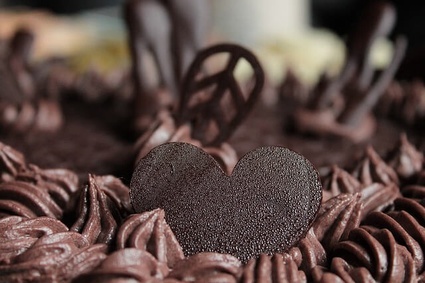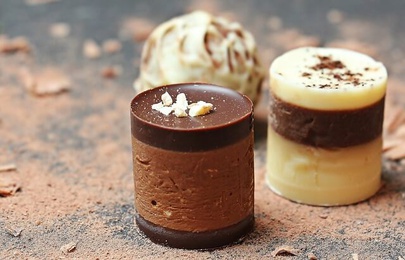Flavonoid-rich chocolate may help the skin protect itself from UV...
but marketing around this property may be a serious challenge!
Eating chocolate made using a process that preserves its high antioxidant content can significantly increase the minimum skin erythema dose (MED) - the dose of UV radiation needed to cause sunburn on the skin (= erythema) - according to a recent study.
30 subjects consumed either flavonoid-rich chocolate (made by Barry Callebaut, using the patented Acticoa method) or flavonoid-poor chocolate, using an entirely identical recipe, but made in a traditional, ordinary method.
Recall that Barry Callebaut developed the special ACTICOA™ process for making chocolate that preserves about 80% of the cocoa flavonoids, which are naturally present in the cocoa bean. However, in the traditional production process, the quantity of flavonoids in cocoa is greatly reduced. More than 70% of the flavonoids are indeed lost.

Each subject participating in the study received a daily serving of 20g of the allocated chocolate. After 12 weeks, the MED of the participants in the flavonoid-rich chocolate group was more than double that of the flavonoid-poor chocolate group. Although MED is a marker of photo protection, study author Stefanie Williams made it clear that it is in no way a replacement for sunscreen.
"The sun protection factor (SPF or SPF) provided by UV filters, such as zinc oxide and titanium dioxide is much higher than that of flavonoid rich substances. This is an additional measure," she said. This action is due to the very high content of flavonoids and its antioxidant properties, she explains.
A 20g serving of this "rich" chocolate contains 660mg of flavonoids, while a cup of green tea contains only 47mg and a glass of red wine, 160mg.
A manufacturing method that preserves flavonoids: anti-aging chocolate?
Chocolate, even dark chocolate, produced by a usual manufacturing method does not have such strong antioxidant properties because a number of steps, such as exposure to heat in the manufacturing process, decreases the amount of flavonoids. Flavonoid-rich chocolate produced using this method is already on the market and is part of the "beauty from within" trend. That said, companies should be cautious about claiming "skin health" properties for this type of product. Indeed, according to the proposed EU regulations, it is not allowed to attribute health benefits to products with a high sugar, saturated fat and salt content. Because chocolate is relatively high in fat and sugar, it may not be possible for the brand to make a claim about health-related properties, or its antioxidant content or skin health.

Barry Callebaut, which patented the Acticoa technology, is currently working on natural sugar and fat reduction processes, with the aim of making the product acceptable by legislation. It was already known that several cosmetic brands had developed chocolate-based beauty treatments for the skin. It was also known that spas and thalassotherapy centers used chocolate as the main ingredient for some of their cures. Once again, chocolate opens up new, positive and interesting perspectives. Chocolate and its multiple beneficial effects... I volunteer to participate in an upcoming clinical study on the subject!



